Showing Spotlights 993 - 1000 of 2783 in category All (newest first):
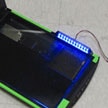 Setting up or upgrading a lab to conduct state-of-the-art DNA nanotechnology is not an inexpensive undertaking. The hardware alone can easily set you back several hundreds of thousands of dollars. Analogous to the open-source software approach, increasingly instruments and specialized equipment designs are also developed as part of a growing open source scientific hardware (OSSH) movement. Adding to the list, a recent article presents three examples of open source/DIY technology with significantly reduced costs relative to commercial equipment.
Setting up or upgrading a lab to conduct state-of-the-art DNA nanotechnology is not an inexpensive undertaking. The hardware alone can easily set you back several hundreds of thousands of dollars. Analogous to the open-source software approach, increasingly instruments and specialized equipment designs are also developed as part of a growing open source scientific hardware (OSSH) movement. Adding to the list, a recent article presents three examples of open source/DIY technology with significantly reduced costs relative to commercial equipment.
Oct 7th, 2015
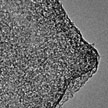 A carbon material with high electrical conductivity, high specific surface area, tunable pore structure, mechanically robust framework, and high chemical stability is an important requirement for advanced electrochemical energy storage. However, neither porous carbon or sp2 carbon can full meet these requirements yet. How to create a conductive carbon material with especially large pore volume, and hence large surface area, has therefore been a key focus in electrode research.
A carbon material with high electrical conductivity, high specific surface area, tunable pore structure, mechanically robust framework, and high chemical stability is an important requirement for advanced electrochemical energy storage. However, neither porous carbon or sp2 carbon can full meet these requirements yet. How to create a conductive carbon material with especially large pore volume, and hence large surface area, has therefore been a key focus in electrode research.
Oct 5th, 2015
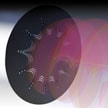 Researchers have demonstrated that perfect orbital angular momentum could be generated in optical nanostructures inspired by catenaries - the curve that a free-hanging chain assumes under its own weight. They used optical catenary-shaped structures to convert circularly polarized light to helically-phased beam carrying orbital angular momentum. Similar to the 'catenary of equal strength', the phase gradient of the optical catenary is equal everywhere, which is a direct result of its special geometric shape.
Researchers have demonstrated that perfect orbital angular momentum could be generated in optical nanostructures inspired by catenaries - the curve that a free-hanging chain assumes under its own weight. They used optical catenary-shaped structures to convert circularly polarized light to helically-phased beam carrying orbital angular momentum. Similar to the 'catenary of equal strength', the phase gradient of the optical catenary is equal everywhere, which is a direct result of its special geometric shape.
Oct 2nd, 2015
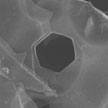 Synthesis of holey two-dimensional (2D) nanosheets with defined hole morphology and hole edge structures remains a great challenge for graphene. It is also an issue for other 2D nanomaterials, such as hexagonal boron nitride (h-BN) and molybdenum disulfide. In new work, researchers have reported a facile, controllable, and scalable method to carve geometrically defined pit/hole shapes and edges on h-BN basal plane surfaces via oxidative etching in air using silver nanoparticles as catalysts.
Synthesis of holey two-dimensional (2D) nanosheets with defined hole morphology and hole edge structures remains a great challenge for graphene. It is also an issue for other 2D nanomaterials, such as hexagonal boron nitride (h-BN) and molybdenum disulfide. In new work, researchers have reported a facile, controllable, and scalable method to carve geometrically defined pit/hole shapes and edges on h-BN basal plane surfaces via oxidative etching in air using silver nanoparticles as catalysts.
Oct 1st, 2015
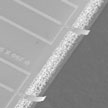 The development of nanoscale devices and applications requires ultra-sensitive sensing systems that can offer not only atomic resolution imaging but also sub nanometer scale displacement detection, zeptogram level mass sensing, or single bio-molecular sensing. Researchers have now developed a novel sensor that addresses some of the shortcomings that have plagued existing optical scanning systems , namely size, complexity, and cost. This sensing technology is completely electrical and capable of sensing very small displacement as low as in the femtometer range.
The development of nanoscale devices and applications requires ultra-sensitive sensing systems that can offer not only atomic resolution imaging but also sub nanometer scale displacement detection, zeptogram level mass sensing, or single bio-molecular sensing. Researchers have now developed a novel sensor that addresses some of the shortcomings that have plagued existing optical scanning systems , namely size, complexity, and cost. This sensing technology is completely electrical and capable of sensing very small displacement as low as in the femtometer range.
Sep 30th, 2015
 To overcome the pixel size limitation of existing digital image sensors, both new materials with enormous photoelectric properties and novel device architectures are required. In new work, researchers are now reporting ultra-high resolution nanorod digital image sensor (NDIS) which is fabricated by sandwiching vertically aligned zinc oxide nanorod arrays between orthogonal top and bottom nanostripe electrodes. The most important application of the NDIS is as a next-generation digital image sensor with ultra-high resolution, well beyond the limit of existing techniques.
To overcome the pixel size limitation of existing digital image sensors, both new materials with enormous photoelectric properties and novel device architectures are required. In new work, researchers are now reporting ultra-high resolution nanorod digital image sensor (NDIS) which is fabricated by sandwiching vertically aligned zinc oxide nanorod arrays between orthogonal top and bottom nanostripe electrodes. The most important application of the NDIS is as a next-generation digital image sensor with ultra-high resolution, well beyond the limit of existing techniques.
Sep 29th, 2015
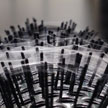 Researchers developed a simple controllable set-up for drawing single filament nanofibers from polymer solutions or melts using a rotating rod or a set of rods (round brush). This method can be used to produce 3D tissue scaffolds by winding nanofibers onto spools of different shapes and dimensions and depositing cells of interest at the same time. The new method, which the scientists named touch-spinning, has excellent control over the fiber diameter and is compatible with all kinds of polymeric materials, polymer melts and solutions, polymer composite materials, and biopolymers.
Researchers developed a simple controllable set-up for drawing single filament nanofibers from polymer solutions or melts using a rotating rod or a set of rods (round brush). This method can be used to produce 3D tissue scaffolds by winding nanofibers onto spools of different shapes and dimensions and depositing cells of interest at the same time. The new method, which the scientists named touch-spinning, has excellent control over the fiber diameter and is compatible with all kinds of polymeric materials, polymer melts and solutions, polymer composite materials, and biopolymers.
Sep 23rd, 2015
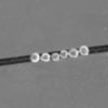 Researchers engineered synthetic nanomotors that self-propel and autonomously detect surface cracks in electronic devices and rapidly restore the conductive pathway. These nanomotors were inspired by the chemotaxis of neutrophils toward inflammation sites and the aggregation of platelets at the collagen fibers of a wound to stop bleeding. The catalytic nanomotors are composed of conductive gold/platinum spherical Janus particles that self-propel efficiently in the presence of hydrogen peroxide fuel.
Researchers engineered synthetic nanomotors that self-propel and autonomously detect surface cracks in electronic devices and rapidly restore the conductive pathway. These nanomotors were inspired by the chemotaxis of neutrophils toward inflammation sites and the aggregation of platelets at the collagen fibers of a wound to stop bleeding. The catalytic nanomotors are composed of conductive gold/platinum spherical Janus particles that self-propel efficiently in the presence of hydrogen peroxide fuel.
Sep 22nd, 2015
 Setting up or upgrading a lab to conduct state-of-the-art DNA nanotechnology is not an inexpensive undertaking. The hardware alone can easily set you back several hundreds of thousands of dollars. Analogous to the open-source software approach, increasingly instruments and specialized equipment designs are also developed as part of a growing open source scientific hardware (OSSH) movement. Adding to the list, a recent article presents three examples of open source/DIY technology with significantly reduced costs relative to commercial equipment.
Setting up or upgrading a lab to conduct state-of-the-art DNA nanotechnology is not an inexpensive undertaking. The hardware alone can easily set you back several hundreds of thousands of dollars. Analogous to the open-source software approach, increasingly instruments and specialized equipment designs are also developed as part of a growing open source scientific hardware (OSSH) movement. Adding to the list, a recent article presents three examples of open source/DIY technology with significantly reduced costs relative to commercial equipment.
 Subscribe to our Nanotechnology Spotlight feed
Subscribe to our Nanotechnology Spotlight feed





